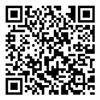Specific Solutions
Time Context in Chinese-French Translation
Due to the existence of polysemous words, the meaning of the same word or sentence can vary significantly in different contexts. Polysemous words are prevalent in various languages, making "context" particularly crucial in translation. Without considering context when translating, one would merely be making baseless guesses about the meaning of a sentence. When translating Chinese into French, context—especially time-related cues—is the primary element to consider. All Chinese learners of French have likely struggled with the complex verb tenses in French, primarily because we are accustomed to neglecting verb tenses in Chinese and instead use time indicators in sentences to indicate the timing of actions. Therefore, only by determining the time frame under which a Chinese sentence occurs can we correctly select the tense for the "verb," the most critical part of the French translation.
Take the following two sentences as an example: 1. Beijing will host the Winter Olympics in 2022. 2. Yesterday's newspaper reported the news that "Beijing will host the Winter Olympics in 2022."
In these two sentences, the time indicator in the first sentence is "2022," while in the second sentence, it is "yesterday." Consequently, in the French translations, the first sentence should use the future tense, and the second sentence should use the past tense. The translations are:
1. En 2022, Pékin accueillera les Jeux Olympiques d’hiver. 2. Le journal d’hier a publié la nouvelle qu’en 2022, Pékin accueillerait les Jeux Olympiques d’hiver.
Similarly, in French-to-Chinese translation, the time context becomes even more critical. In French expressions, verb tense changes are commonly used to indicate the timing of actions. Hence, time indicators are often omitted. When translating from French to Chinese, we need to supply the missing time indicators to accurately convey the original text's meaning comprehensively. Consider the following sentences:
1. Qu’est-ce qu’il t’arrive ? Tu étais tellement heureux. 2. Il n’est pas encore un grand homme, mais il le sera.
Although there are no explicit time indicators in these two sentences, the first sentence uses the imperfect past tense, indicating that the action occurred in the past, while the second sentence uses the future tense, suggesting that the action has not yet occurred. The Chinese translations of these two sentences would be:
1. 你出什么事了?你以前是那么快乐。 2. 他现在还不是什么大人物,但他以后会是的。
In the translations, we added the words "以前" (before), "现在" (now), and "以后" (in the future) to indicate the timing of the actions, even though these words do not exist in the original French text. Additionally, in literary works in French, authors often use a series of imperfect past tense verbs to describe past events descriptively. For example, in a passage from Albert Camus' "L'Étranger" (The Stranger):
“La chaleur montait et je voyais dans la salle les assistants s’éventer avec des journaux. Cela faisait un petit bruit continu de papier froissé.”
In such cases, when translating these passages independently, we only need to specify the time once at the beginning or end of the sentence, without emphasizing time excessively, as it may result in redundancy. The Chinese translation of this passage could be:
“这时候,周遭逐渐热了起来。我看见在大厅里,书记员们用报纸扇着风,发出一阵阵纸张揉搓的细微声响。”


















